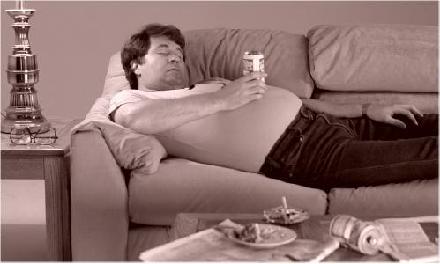If you’re prone to worrying whether your ‘butt looks big in this’, particularly after the holidays, you can take comfort that there may be health benefits.
Oxford University scientists – who have looked at all the evidence on the health effects of storing more fat on the hips, thighs and bum, rather than around the waist – show that having a ‘pear shape’ is not just less bad for you than an ‘apple shape’, but actively protects against diabetes and heart disease.
The team from the Oxford Centre for Diabetes, Endocrinology, and Metabolism (OCDEM) have published their summary of the latest research in the International Journal of Obesity today.
‘The idea that body fat distribution is important to health has been known for some time,’ says Dr Konstantinos Manolopoulos, one of the paper’s authors along with Dr Fredrik Karpe and Professor Keith Frayn.
‘However, it is only very recently that thigh fat and a larger hip circumference have been shown to promote health, that lower body fat is protective by itself.’
He adds: ‘This protective effect is independent of weight. However, if you put on weight, thigh circumference will increase but your waist circumference will also increase, which over-rides the protective effect.’
‘Control of body weight is still the best way to stay healthy, and the advice remains the same: it is important to eat less and exercise more.’
The Oxford researchers explain that the body uses its fat tissues to store energy in the form of fatty acids, which can be released when needed, for example after heavy exercise or a period of starvation. Both tummy and thigh fat handle this process, but fat around the waist is much more active in storing and releasing fatty acids in response to need throughout the day. Thigh fat is used for much longer term storage.
More waist or abdominal fat tends to lead to more fatty acids floating around the body where it can get deposited in other organs like the liver and muscle, and cause harm. This is associated with conditions like diabetes, insulin resistance and heart disease.
Thigh fat on the other hand, traps the fatty acids long term, so they can’t get deposited and cause harm.
'Thigh fat and a larger hip circumference have been shown to promote health, and lower body fat is protective by itself,' said Manolopoulos.
The scientists also review evidence that abdominal fat and thigh fat release different levels of hormones. Waist fat is known to release molecules called pro-inflammatory cytokines, and inflammation is a process linked to diabetes and heart disease.
Thigh fat might also secrete more beneficial hormones like leptin and adiponectin, Dr Manolopoulos says, although this is unclear at the moment.
Dr Manolopoulos says the typical difference in male and female body shapes, with men more likely to have fat around the waist and women have more fat on their thighs and hips, neatly illustrates the health effects of different body shapes.
‘If you looked at a man and woman of the same weight and aged around 40, they would have different weight distributions, and it would be the man that was at higher risk of diabetes and heart disease,’ he says.
‘However, when women go through menopause, as well as changes in their hormones they tend to see a change in body shape. They lose body fat and move to a more ‘male’ fat distribution. They then have the same risk of heart disease and diabetes as men.’
It may be possible to use these findings in the future to reduce people’s health risks but that is a long way off, cautions Dr Manolopoulos.
‘We don’t really know how the body decides where to store fat. At the moment we need to understand more about the mechanisms the body uses. Only then will we be able to take the next step and try to influence this.’
‘In principle, this should be possible. There is a class of anti-diabetic drugs that is known to redistribute fat in the body from internal organs to fat stored subcutaneously under the skin. This improves symptoms in diabetes,’ he says.
The team at OCDEM, funded by the Wellcome Trust, is working to understand the way the body stores and turns over fat. They recently pinpointed two genes that are associated with differences in people’s body fat distribution and may be important during embryo development.
‘They are weak effects, but this is just a beginning,’ says Dr Karpe, one of the research group heads. ‘Obesity is a big problem, but it may be that the characteristics of that obesity are more important.’
Source:
University of Oxford and
"Gluteofemoral body fat as a determinant of metabolic health"



































